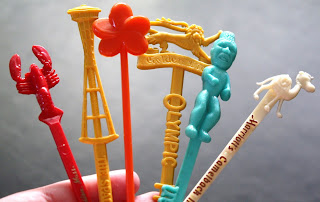The core of my family was reared on the banks of the Great Lakes—massive freshwater lakes that straddle Canada and the U.S. They settled into a comfortable routine: eat, sleep, work, and fish. While fishing was never a career choice, my father would happily spend his days out on the water. “A bad day fishing,” he used to say, “is better than any day at the office.”
Obsessions run in the family.
Though I spent most of my time land-locked in the Midwest, I’ve had a life-long fascination with the ocean. Contrary to family traditions, my interest has always been
beneath the waterline. Summers spent on Lake Michigan, I’d stand on the deck and wonder, “What’s down there?”
Back in Peoria, ten minutes outside the city...we were sounded by cornfields. Scuba diving in the Prairieland? Yes. You can dive in abandoned strip mines, long forgotten and stocked with catfish. Did you know catfish, like koi, grow to the limits of their surroundings? Giant catfish and artificial reefs comprised of abandoned school busses? Not the diving of my fantasies.
A move to Seattle in 1995 opened new possibilities. Ocean diving was 20 minutes away, and I launched into diving with a passion. Here, water temperatures hover at 48 degrees year-round and protecting yourself from hypothermia, requires a tremendous amount of gear. Armed with a new credit card, I loaded up: $1,200 dry suit, $400 dive light (it’s dark down there!), tanks--$300 each, custom-designed mask with prescription lenses $500, and on it went.
I dove after work and nearly every weekend. Vacations were spent exploring Canada’s Inside Passsage—Jacques Cousteau’s #2 favorite place in the world to dive. Giant octopus, colorful squid, docile ratfish (part of the shark family) were spotted regularly.
Traveling in other countries, diving was always a major factor. Belize, Thailand, Mexico, Cuba, Canada. If there was water, I went diving.
But it was never quite the same.
The beautiful colors you see in documentaries? Those are achieved by massive lights, with filters that put the color spectrum back in. (Think of the color spectrum, the deeper you go, the more colors get lost. At a normal depth of 30 feet, even the most colorful creatures appear in tones of grey.)In the Northwest, overcast days and dark waters require artificial light—even for day dives. Here, vivid colors were a part of my normal dive experience. Transfixed, I could easily spend an entire dive watching an octopus change colors and textures. It was a major highlight of the dive.
In Thailand, I tried diving with supplemental lights. While the colors were lost due to depth, the water was so clear, the bright natural light made mine useless. Back on the boat, the dive master shrugged and said, “You’re a night diver.”
You want bold colors in the tropics? Night diving is the best approach. Voila! Problem solved.
Last week I watched IMAX's "Under the Sea" documentary. Transfixed by the lush colors and spell-binding cinematography, my tropical dive fantasies swelled into overdrive! Dumbfounded, I kept asking…
how did they do
that?
The director’s notes provide incredible insight:

Locations: North America, New Guinea, South Australia, Great Barrier Reef, and Indonesia

A minimum of 3 weeks diving at each location.

The team traveld with over 8,000 pounds of gear.

Camera + lights + underwater housing unit = 1,300 pounds (They use an above-board crane to raise and lower it into the water.)

For every shoot, there are 7 divers in the water. “We need all those people to move the camera.”

Off the tripod, the 1,300 pound camera is neutrally buoyant, but it’s unwieldy in current. “You don’t want to be between the camera and a rock.”

Shot with high-resolution film, the camera has a
3 minute run time. To load more film, the entire unit has to go back to the boat.
Why are my dive experiences different than documentaries? I get it now.


 Canadian edition / American edition (paperback)
Canadian edition / American edition (paperback)



 Camera + lights + underwater housing unit = 1,300 pounds (They use an above-board crane to raise and lower it into the water.)
Camera + lights + underwater housing unit = 1,300 pounds (They use an above-board crane to raise and lower it into the water.) For every shoot, there are 7 divers in the water. “We need all those people to move the camera.”
For every shoot, there are 7 divers in the water. “We need all those people to move the camera.” Off the tripod, the 1,300 pound camera is neutrally buoyant, but it’s unwieldy in current. “You don’t want to be between the camera and a rock.”
Off the tripod, the 1,300 pound camera is neutrally buoyant, but it’s unwieldy in current. “You don’t want to be between the camera and a rock.” Shot with high-resolution film, the camera has a 3 minute run time. To load more film, the entire unit has to go back to the boat.
Shot with high-resolution film, the camera has a 3 minute run time. To load more film, the entire unit has to go back to the boat.







































